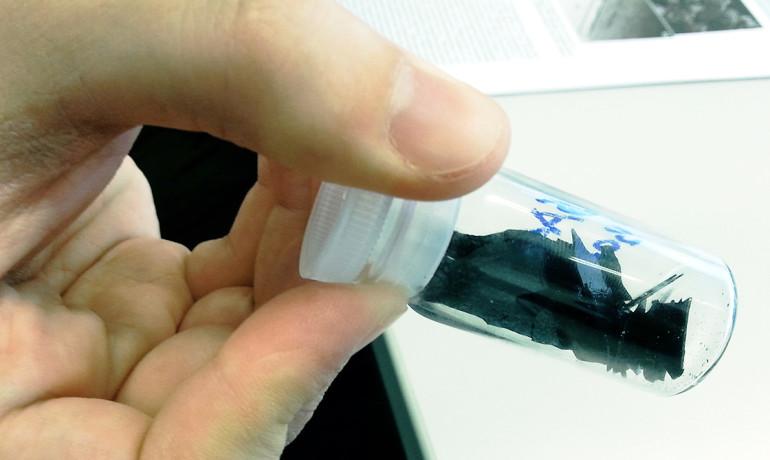Today’s lithium-ion batteries are good, but not good enough for future energy demands.
Scientists at ETH Zurich have developed a type of glass that can be used as an electrode material in lithium-ion batteries—and has the potential to vastly improve battery capacity.
Better batteries are critical for the growth of clean energy technologies, such as electric cars, wind turbines, and solar power plants.
In response, researchers are searching for new materials that exhibit a greater energy density and charging capacity, but which are no heavier or larger than those used in today’s lithium-ion batteries.
“What we need is new chemistry and novel compounds to obtain safe, better, and longer-lasting batteries,” says Semih Afyon, a scientist at the Electrochemical Materials Institute.
Glass Instead of Crystals
A team led by Afyon and Reinhard Nesper, professor emeritus of chemistry, have discovered a material that may have the potential to double battery capacity: vanadate-borate glass. They recently reported in Scientific Reports how they used the material as a cathode.
The material is made of vanadium oxide (V2O5) and lithium-borate (LiBO2) precursors, and was coated with reduced graphite oxide (RGO) to enhance the electrode properties of the material.
The researchers used a vanadium-based compound because vanadium is a transition metal with various oxidation states, which can be exploited to reach higher capacities. In crystalline form, vanadium pentoxide can take three positively charged lithium ions—three times more than materials presently used in cathodes, such as lithium iron phosphate.
However, crystalline vanadium pentoxide cannot release all of the inserted Li-ions, and only allows a few stable charge/discharge cycles. The reason why: once the lithium ions penetrate the crystalline lattice during the loading process, the lattice expands. As a result, an electrode particle swells as a whole—it increases in volume only to shrink again once the charges leave the particle.
This process may lead to instabilities in the electrode material in terms of structural changes and contact losses.
Researchers therefore had to find a way to retain the structure of the initial material while maximizing the capacity and also maintaining its ability to “take” the charges, which is how they devised the idea of using vanadium as a glass rather than in its crystalline form.
In glass, a so-called “amorphous” material, atoms do not arrange themselves in a regular lattice as they do when they are in a crystalline state. Instead, the atoms exist in a state of wild disarray.
Simple to Procedure
To make the cathode material, Afyon and his colleagues blended powdered vanadium pentoxide with borate compounds.
“Borate is a glass former; that’s why the borate compounds were used, and the resulting glass compound is a new kind of material, neither V2O5 nor LiBO2 at the end,” Afyon explains.
The materials scientists melted the powder at 900°C and cooled the melt as quickly as possible to form glass. The resulting paper-thin sheets were then crushed into a powder before use, as this increases their surface area and creates pore space.
“One major advantage of vanadate-borate glass is that it is simple and inexpensive to manufacture,” says Afyon.
To produce an efficient electrode, the researcher coated the vanadate-borate powder with reduced graphite oxide (RGO). This increases conductivity while at the same time protects the electrode particles. However, it does not impede electrons and lithium ions as they are transported through the electrodes.




